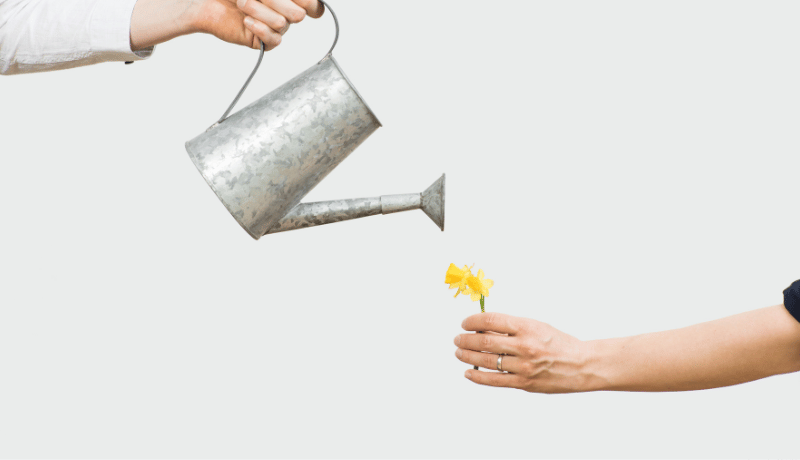
Flowers are a delightful addition to any setting, infusing spaces with color and fragrance. However, their delicate nature means they can suffer quickly if not properly cared for. One of the most crucial elements in maintaining the freshness of cut flowers is ensuring they have access to water. In this detailed guide, we will explore how long flowers last without water, the factors that affect their longevity, and practical tips to keep your blooms vibrant for as long as possible.
Understanding Flower Longevity Without Water
Flowers, being living organisms, have varying tolerances to water deprivation. The ability of flowers to survive without water can be influenced by several factors:
- Type of Flower: The species of the flower plays a significant role in its longevity without water. Some flowers are naturally more resilient, while others are more delicate. For example, hardy flowers like chrysanthemums and gerberas can tolerate brief periods without water better than delicate flowers like peonies or orchids.
- Stage of Bloom: The stage at which the flower is in its lifecycle also impacts its endurance. Buds that are not yet open tend to survive longer without water compared to fully bloomed flowers, which are more susceptible to wilting.
- Environmental Conditions: Temperature, humidity, and air circulation can significantly affect how long flowers can last without water. Flowers exposed to high temperatures and dry air will dehydrate more quickly. Conversely, a cooler and more humid environment can help flowers stay fresh longer.
How Long Can Flowers Last Without Water?
On average, cut flowers can last between 8 to 12 hours without water before they begin to wilt. However, this is a general estimate and can vary based on the factors discussed. Here’s a closer look at how different types of flowers fare without water:
- Roses: Roses can last up to 6-8 hours without water before showing signs of wilting. Their thick petals and strong stems offer some resilience, but they still require timely hydration.
- Lilies: Lilies, with their delicate petals, may start to wilt within 4-6 hours without water. They are particularly sensitive to dehydration and need immediate rehydration to recover.
- Tulips: Tulips can last about 8 hours without water. They are relatively hardy but will benefit from quick rehydration to maintain their freshness.
- Orchids: Orchids are known for their sensitivity to water stress. They can last around 4-6 hours without water and may show signs of wilting quickly if not properly hydrated.
Strategies to Extend the Life of Your Flowers
To maximize the lifespan of your flowers and keep them looking their best, consider the following strategies:
- Immediate Rehydration: If flowers have been without water, place them in a fresh, clean vase with water as soon as possible. Rehydration can help reverse some of the damage caused by dehydration.
- Flower Food: Adding a commercial flower preservative to the water can provide essential nutrients and antibacterial agents that help extend the life of your flowers. Flower food typically contains a mix of sugars, acids, and biocides that support flower health.
- Cool Storage: Store flowers in a cool area away from direct sunlight, heat sources, and drafts. Cooler temperatures slow down the metabolic processes in flowers, which helps them retain moisture longer.
- Stem Care: Trim the stems of your flowers at an angle before placing them in water. This improves water absorption and helps prevent blockages in the stems that can hinder water uptake.
- Regular Water Changes: Change the water in the vase every 2-3 days to keep it clean and free from bacteria. Bacteria can cause the stems to rot and shorten the lifespan of your flowers.
- Remove Wilted Leaves: Regularly remove any wilted or dead leaves from the vase. Decaying leaves can contaminate the water and affect the overall health of the flowers.
Practical Solutions for Emergency Situations
In cases where you must transport or store flowers without immediate access to water, use these practical solutions:
- Moist Wrapping: Wrap the stems in damp paper towels or a damp cloth and secure them with plastic wrap or rubber bands. This can help retain moisture for a few hours.
- Floral Foam: Use floral foam soaked in water for arrangements that need to be transported. This provides a steady supply of moisture to the flowers and helps keep them hydrated during transit.
- Water Tubes: Floral water tubes are small, portable containers that can hold water for individual flower stems. These are particularly useful for keeping flowers hydrated during travel or short-term storage.
- Hydration Mist: In some cases, lightly misting the flowers with water can help provide temporary relief and slow down the wilting process.
Additional Tips: Growing Flowers in Containers
For those interested in enhancing their gardening skills, Growing flowers in containers is an excellent way to enjoy blooms in a more manageable space. Container gardening allows you to create beautiful arrangements even if you have limited outdoor space. Learn how to select the right containers, soil, and flower varieties to achieve stunning results in your garden.
Recommended Reading
For more in-depth information on flower care and gardening, you might find the following resource helpful: The Ultimate Guide to Flower Arranging. This guide provides comprehensive tips and techniques for arranging flowers, ensuring they look their best and last as long as possible.
Conclusion
Understanding how long flowers can last without water and implementing strategies to extend their lifespan can make a significant difference in the enjoyment of your blooms. By considering the type of flower, its stage of bloom, and environmental conditions, you can better manage their care. Remember to use proper hydration techniques and maintenance tips to keep your flowers looking fresh and vibrant for as long as possible.
